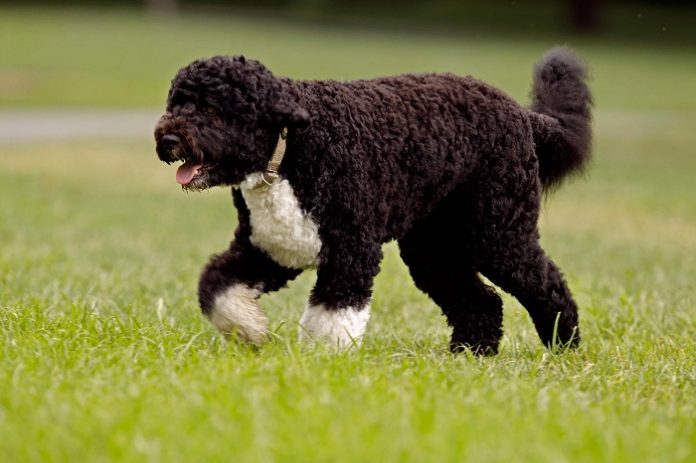The Portuguese water dog, as its name implies, originates from Portugal. This breed primary function was to draw fishermen nets out of the water, pick up fish that swam from the net, transmit messages from one ship to another or from one shore to another, or to store catches and fisherman’s gear.
Description
– Male dogs of this breed can be tall from 50 to 59 centimeters
– Female dogs of this breed can be tall from 42 to 52 centimeters
– Male dogs of this breed can weigh from 19 to 25 kg,
– Female dogs of this breed can weigh from 16 to 22 kg,
– Life span 10–14 years
Anatomically, this breed of dog is particularly strong. The Portuguese water dog has a wide nose and strong jaw, beautiful round black and brown eyes and ears in the shape of a heart and are lower. The tail is long and does not trim because it helps them swim. It is initially thicker and then narrows to the top. This breed of dog can be up to fourteen years old.
Temperament
This breed of dog is friendly and in a good mood. It attaches very easily to its owner. The Portuguese water dog is in good relation with other dog breeds and is also a good keeper. This breed of dog is quite obedient and very easy to train and also quite quickly learn new commands.
This breed of dog does not belong to the group of aggressive dogs. They are active dogs by nature and are great pets for families with small children. This means that if you live in an apartment or a house without a yard, you must regularly guide your dog to run somewhere at least once a day to get rid of excess energy. It is interesting to note that these dogs are attached not only to one member of the family but to all members equally.
Health
The Portuguese water dog may have hip health problems and the disease is known as hip dysplasia. Some dogs experience pain in both hind legs, but in dogs with hip dysplasia, there is an option not to notice the sign of discomfort. Furthermore, this breed of dog may have problems with juvenile dilated cardiomyopathy, which is an inherited disease and causes the immediate death of small puppies. In addition, the Portuguese water dog may have cataract problems.
Care
The Portuguese water dog should be brushed regularly and combed two to three times a week. There are two types of fur in these dogs: curly fur and wavy fur. The wavy fur is trimmed at the back and a buckle is left on the string while the front part is left to grow to its natural size. Curly fur is often kept for a long time in those dogs of this breed that are bred as hunting dogs and are cut only on the tail. If they meet the need for movement again, Portuguese water dogs can live in an apartment.
Feeding
It is recommended that this breed of dog be fed 3 cups of high-quality dog food and divided into two meals. How much your dog eats depends on his age, size, build, metabolism, and activity levels. Dogs are similar to humans in terms of diet, and even in the case of a dog breed, each dog is an individual.

Puppies
Female dogs of the Portuguese water dog breed can be spotted and bring 2 to 4 dogs. The puppies will initially have flat fur that will gradually become thinner. Small puppies of this breed need breast milk in the first 3 months of life. They reach full size and shape in the period from 6 to 7 months of life.
History
The Portuguese water dog comes from Portugal. There are speculations that this dog also comes from Asia, more precisely as a descendant of shepherd dogs, and later moved to the Iberian Peninsula with the arrival of the Moors in the eighth century. At the beginning of the twentieth century, when the methods of catching fish changed, the number of Portuguese water dogs decreased.
Historically, the Portuguese water dog has evolved by crossing three breeds: the poodle, the barbet, and the cherry – blue-terrier.
In 1930, the ship’s tycoon Vasco Bensaude was surprised by these dogs after witnessing an event when such a dog swam in cold water when he was given command. The Portuguese water dog was first taken to America in 1958, and the American Kennel Club first recognized the breed in 1984. Today, the popularity of this dog as a pet is growing.





